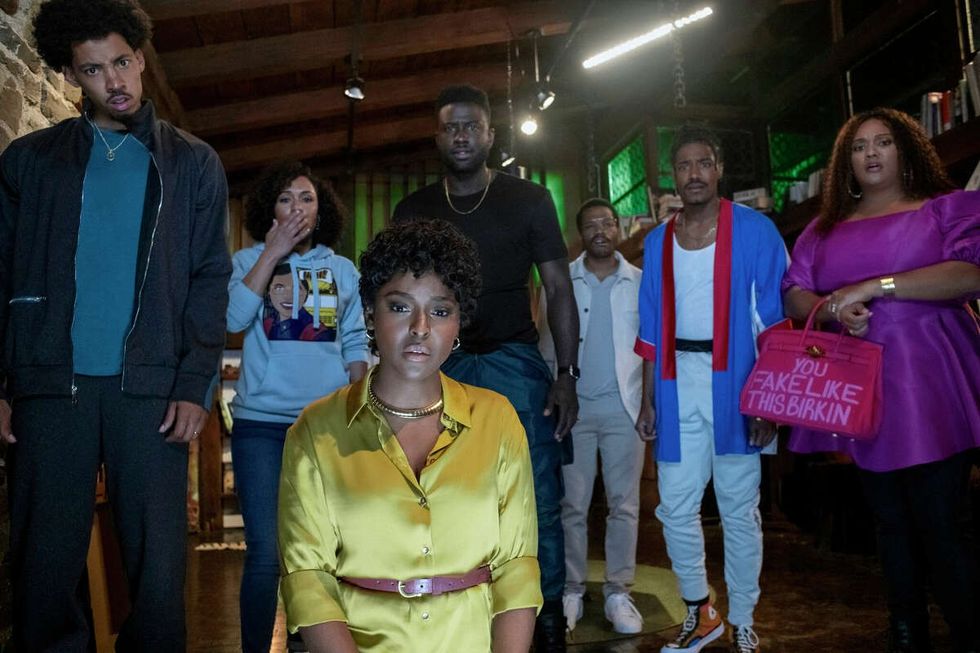
October is the season when endless horror movies, both short and feature-length, are debuting in every theater across the U.S. Our appetite for horror is challenged by all of the blood, guts, and anxieties that creep out of the twisted minds of creatives can think up. However, the genre wasn’t always that gore and anxiety-fueled nightmares.
I have been watching a lot of Pre-Code horror films over on the Critierion Channel, a time before the enforcement of the Hollywood Production Code when horror films were unbound by family-friendly morality and influenced by the visual style of German Expressionism, and couldn’t help but to think about the birth of the genre.
While we’ve covered the first film ever, we never looked at the first films of a specific genre. What film kicked off the horror genre, and how does it still influence modern horror films being made today?
Let’s get into it!
The First Horror Film
According to the New York Film Academy, the history of horror as a film genre begins with the works of George Méliès, as do many of the foundational moments in cinema tend to do. Méliès was a French illusionist, actor, and film director who developed many of the techniques and narrative beats that we still use today.
After his first few years working as a filmmaker, Méliès created Le Manoir du Diable (known in English as The Haunted Castle or The House of the Devil) in 1896. The three-minute comedy horror film is complete with cauldrons, animated skeletons, ghosts, transforming bats, and the incarnation of the Devil.
The film was thought to be lost. However, the only surviving copy of the film was purchased in a junk shop in Christchurch, New Zealand between the 1930s and 1940s, and was identified by a film archivist in 1985 as one of the few remaining reels of the film in the world, if not the only (according to NGA Tonga) .
Check out the horror short film below:
While the short is not created to be scary, the film was the first example of supernatural elements that would set a precedent for what was to come from the horror genre.
Clearly, Méliès was limited with technology to create the visuals his imagination was reaching for. But this does not limit the power of the short film.
The cuts of creatures transforming, and the demons disappearing and then transporting across the room to scare the main character are common scare tactics used in horror films. Themes of insanity and the supernatural became the foundational elements of the horror genre, and filmmakers often use them today to create a sense of mystery and tension within the story. When audiences are unsure whether what they are seeing is real or imagined, it creates a sense of unease and dread that is essential to the horror experience.

After the first horror movie, supernatural-themed films became all the rage between 1900 and 1920. Literature classics became a source of inspiration for many of these films. While many of these films like Edison Studios’ Dr. Jekyll and Mr. Hyde and The Werewolf have been lost to time, German Expressionist classics like The Cabinet of Dr. Caligari and Nosferatu became fundamental horror films that introduced terror to audiences and a literary technique that had never been used in a screenplay before.
After the Silent Era of cinema, incredible horror stories began to take over the silver screen. The ’30s marked the first time that the word “horror” was used to describe the genre. Not only did we get the fundamental Universal Classic Monsters (which includes Frankenstein, The Mummy, The Invisible Man, and Dracula), but we also got the first color adaption of Dr. Jekyll and Mr. Hyde in 1931.
Unfortunately, other films in the genre began to worry the general public. 1932’s Freaks is one example of the many films that shocked audiences to the point of public outcries for censorship of the horror genre. The film was so shocking at the time that it got cut extensively, and the original version of the film is nowhere to be found. Director Tod Browning, who also directed Dracula, saw his career suffer at the hands of the controversy.
However, Freaks, for better or worse, is one of the earliest examples of disabled horror that showcases a cast that is mostly played by disabled actors. The history of Freaks is an interesting one that is worthy of your time.
The Modern Horrors of Cinema

Horror has gone through many changes of the century. While remakes and requels are still popular in Hollywood, original stories that breathe new life into the genre, like The Babadook and Beau is Afraid, as well as sociopolitical horrors like Nope and The Blackening poke at the genre’s racial stereotypes while paying homage to the horrors that influenced them.
The main goal of horror has never been to scare the audience. Instead, the main goal of the genre is to entertain and push the limits of the technology available to us. It is a genre that allows filmmakers to experiment and push the boundaries of what we think is possible. However, we do enjoy the bloody good scares of modern horror.
Source: NYFA
Author: Alyssa Miller
This article comes from No Film School and can be read on the original site.
